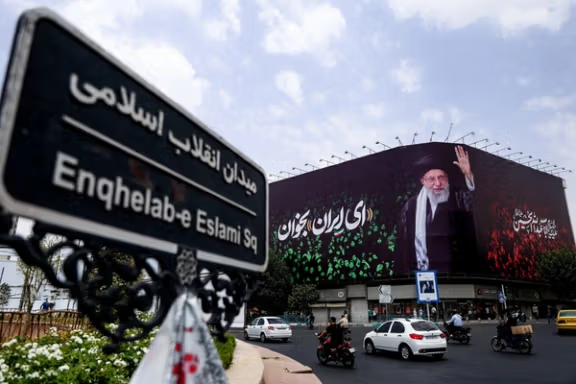Iran's security shakeup is more rebrand than reboot

Ali Larijani’s reappointment as secretary of Iran’s Supreme National Security Council (SNSC) may appear to mark a return to moderation, but it is better understood as a tactical facelift.

Ali Larijani’s reappointment as secretary of Iran’s Supreme National Security Council (SNSC) may appear to mark a return to moderation, but it is better understood as a tactical facelift.
Behind the tailored suits and diplomatic polish lies the same system preparing for confrontation, not compromise.
The SNSC, one of the Islamic Republic’s most powerful institutions, is ultimately controlled by Supreme Leader Ali Khamenei. All senior appointments fall under his direct authority.
Larijani, who previously served as SNSC secretary from 2005 to 2007 and was parliament speaker for over a decade, is one of the regime’s most enduring insiders. A longtime adviser to Khamenei, he has often served as a bridge between rival factions.
With his neatly trimmed beard, sharp gaze, and preference for suits over uniforms, Larijani offers a stark contrast to his predecessor, Rear Admiral Ali Akbar Ahmadian of the IRGC Navy, who often appeared in fatigues and had a distinctly harder edge.
But the change is stylistic, not strategic. Tehran’s broader posture remains intact.
Image over substance
The reshuffle comes as Iran faces mounting pressure over its nuclear program and prepares for the possibility of renewed military conflict with Israel or the United States.
Even journalists aligned with the reformist camp have voiced skepticism over Larijani’s return, calling it “too little, too late.” That skepticism is echoed by Nour News, affiliated with former SNSC chief Ali Shamkhani, who issued a thinly veiled warning on Wednesday:
“National security bodies complement the decision-making process, not replace it. If management and structural changes at a national security body are paired with unrealistic expectations, it will lead to the institution losing its operational credibility.”
Contained rivalries
Larijani and Shamkhani represent rival power centers within the Islamic Republic, each vying for influence over national security and foreign policy.
They may trade blows in public—or, in Iranian political parlance, compete for a bigger “share of the revolution’s spoils.” But when faced with internal unrest or foreign threats, such rivalries are quickly subordinated to regime survival.

Their behavior is captured by a Persian proverb: “We might tear each other limb from limb, but we are brothers. Therefore, we will always bury the bones.”
The Islamic Republic’s first supreme leader Ruhollah Khomeini put it more bluntly: “Preserving the regime is everyone’s highest religious duty—even more important than the life of the (Promised Savior).”
A new war council
Two days before Larijani’s appointment, the SNSC invoked Article 176 of Iran’s constitution to establish a National Defense Council.
Echoing the Supreme Defense Council of the 1980s, the new body is tasked with streamlining security decision-making in wartime.
It will be chaired by the president—or an SNSC member appointed by him—and will include the heads of Iran’s three branches of power, the intelligence minister, the chief of the General Staff, commanders of the IRGC and Artesh, two Supreme Leader representatives, and the head of the Khatam al-Anbia Central Headquarters.
The formation of the new body is a sign that Tehran sees confrontation as imminent.
Larijani’s return should be viewed in that context: not the return of a moderate to power, but the placement of a loyal, presentable veteran into a structure recalibrating for crisis.
As another Persian proverb puts it: “When the adversary rains arrows down on you, take shelter. Rush from one column to another, and buy yourself time—until chance provides you with an opening to fight or flee.”